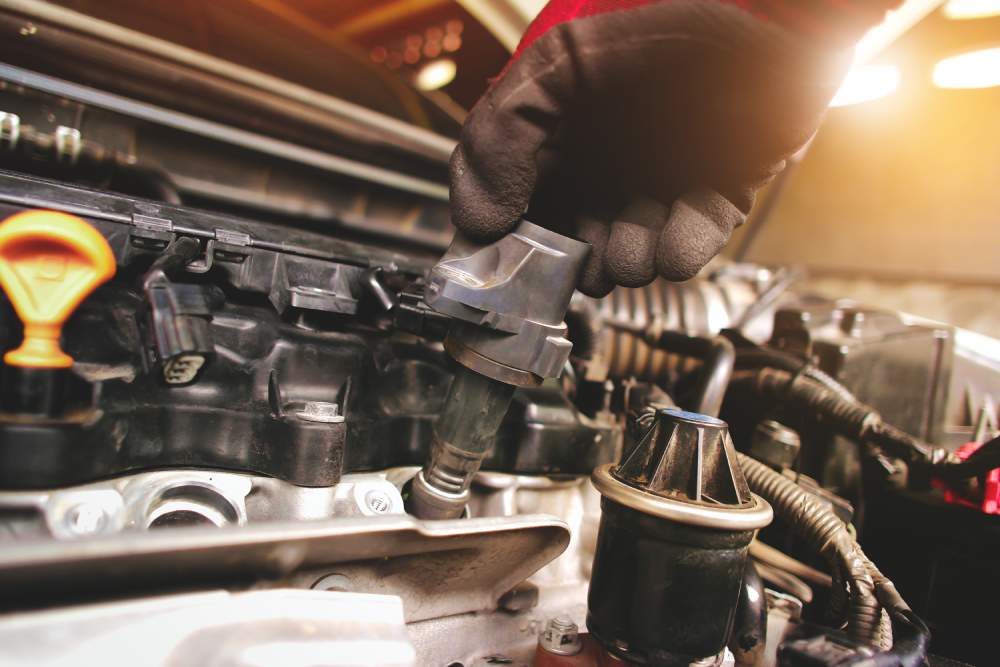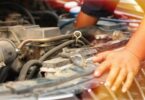Maintaining the ignition coils in your vehicle will eliminate issues with your car starting, stalling, and misfiring. Here we look at what the ignition coil does, the problems created when the coil is dirty, how it gets dirty, and how to clean the ignition coil.
Ignition coil explained
Your vehicle requires 5,000 to 45,000 volts to turn over the engine. While older model cars only needed a single ignition coil, today’s cars have a pack of coils.
Generally, you will have one coil for each cylinder. Once the ignition coil converts the 12 volts into the higher voltage needed to start the vehicle, it uses the spark plug to start the engine.
The conversion starts with the flow of current through the primary circuit, where it hits the core loaded with magnetic energy to charge the coil. This charge ignites the secondary coil by boosting the voltage to spark the ignition. If the power flow is interrupted, you lose the magnetic field.
Most newer cars with a Coil-on-plug setup will have the ignition coil on the spark plugs. If it is a Wasted Spark system without a distributor, it is set up on a pair of spark plugs. Older models will have an ignition coil adjoining the distributor and the battery.
While ignition coils should last for 120,000 miles or close to five years, several things can affect the coil’s longevity.
Causes of defective ignition coils

* Moisture
Any moisture that accumulates around the spark plugs and ignition coil will cause damage to both. Water, moisture from the air conditioner, or a leaky valve cover gasket can all cause this issue. Resolving the created dampness needs to be done then you can check the damage to the plugs and coil.
* Damage to spark plugs and their wires
If you have a bad spark plug wire or plug, the ignition coil will try to compensate by increasing the voltage. Voltage above 35,000 volts creates a short in the damaged coil insulation to create a short decreasing output, causing ignition misfiring and trouble starting the vehicle.
* Harmful vibrations
Breaks and shorting of the secondary windings result from damage to the winding’s insulation due to the engine vibrating.
This damage could make the spark plugs’ electrical connection lose, and the coil works harder to spark the plug.
* Intermittent resistance
Intermittent resistance can diminish sparks and harm the ignition system, including the ignition coil. The same resistance through the coil windings ramps up the electricity resulting in a damaged ignition system. The result of both translates into your car not starting.
* Exposure to high engine temps
Engines run hot, and the ignition coil’s proximity to the engine leaves it ripe for damage. Overheated ignition coils don’t last long or perform well when overheated by reduced electricity conduction.
* Poorly gapped plugs
Wear and tear on plugs and increased gaps in your spark plugs force the ignition coil to conduct increased voltage to compensate for the gap, overloading the coil, so it overheats.
Signs the ignition coil isn’t working properly
* Check engine light
Any engine problem will set off the engine light, and deficits in the ignition coil will light it up.
* Change in fuel consumption
A decline in the gas economy is a direct result of spark plug’s lack of energy production to cause combustion.
* The vehicle won’t start
If the spark plugs don’t get the current they need, especially in a car with a single coil, the vehicle isn’t going to start.
* Misfiring
When you accelerate, a lack of power from the cylinders will create misfiring.
* Your vehicle stalls
A faulty coil that sends intermittent current to the plugs will result in the car stalling. Eventually, the vehicle may not start at all.
* Backfiring
Excess fuel in a combustion chamber is released into your exhaust. While this is an early sign that the ignition coil isn’t working right, it can cause expensive damage to your exhaust system.
How to Clean an Ignition Coil?
Tools
- New ignition coil wires
- Socket wrench and 5.5 mm and 7mm sockets
- Di-Electric grease
- Copper wire brush (soft)
- Spray Electronic cleaner
Step 1:
Remove the negative (black) battery cable from the terminal. As you remove the coil ignition wires, label them so you can remember where they came from for replacement. Taking a picture before you start may also help!
Step 2:
Locate the coil packs and remove them one at a time using the 5.5mm socket and wrench. When pulling the connector plug from the module, you will need the 7mm socket. If you have a 60-degree V6, you will only remove three plugs.
Step 3:
To clean the connections at the bottom and top of the ignition coils, spray the electronic cleaner at the tabs and wires where they connect. Use the soft copper wire brush to brush any debris from the tabs and wires.
Step 4:
Clean the connectors and wire origins on the module with electronic spray. Then use the spray to clean engine harness connectors. After everything is dry, use the Di-electric grease to coat the boot plugs, connectors for the module, and bottom and top of the ignition coils.
Step 5:
Replace the module on the car. Next, replace the coils. In the order you removed them, replugging the connectors and their wires. Finally, remove the excess Di-electric grease.










Leave a Comment